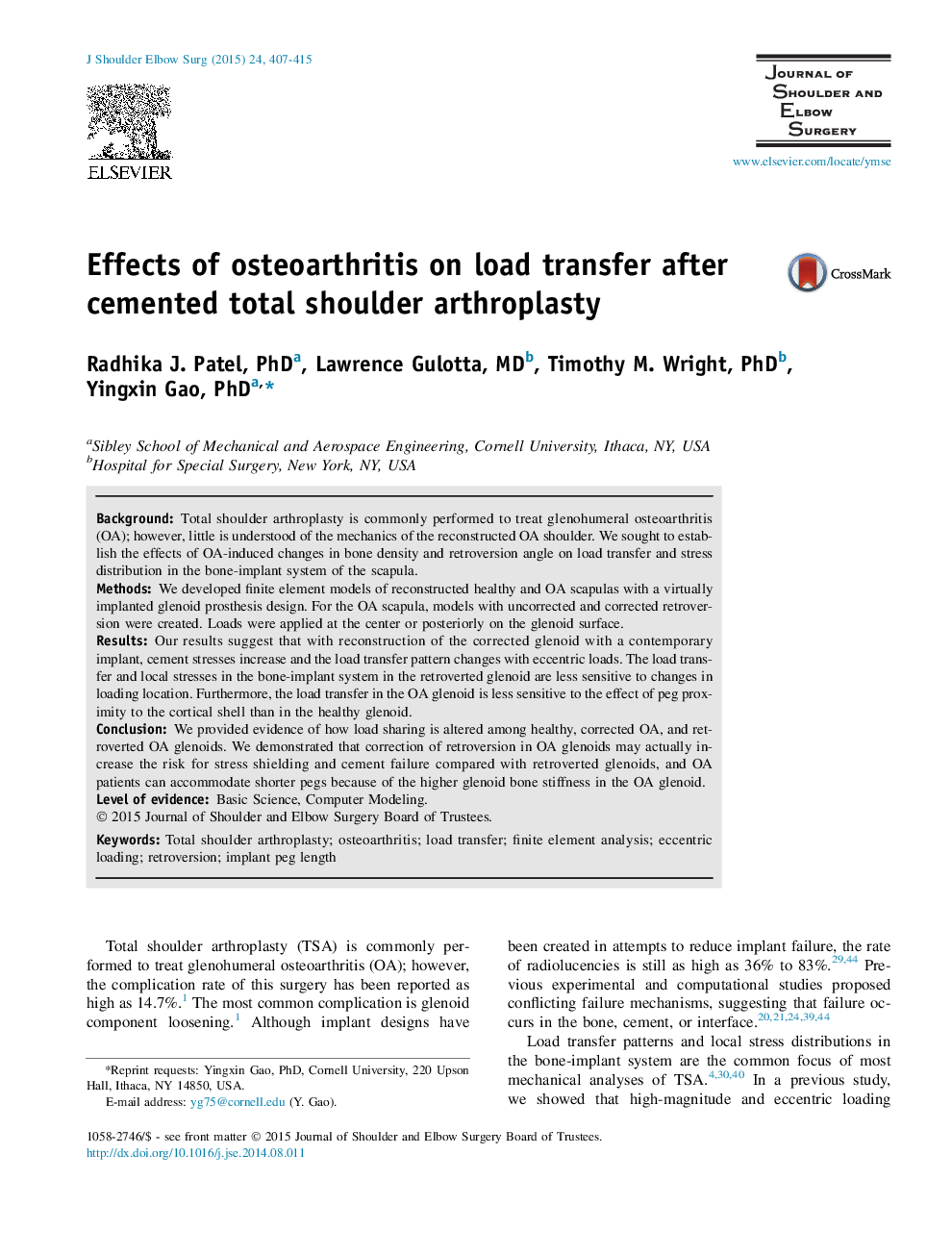| Article ID | Journal | Published Year | Pages | File Type |
|---|---|---|---|---|
| 4073507 | Journal of Shoulder and Elbow Surgery | 2015 | 9 Pages |
BackgroundTotal shoulder arthroplasty is commonly performed to treat glenohumeral osteoarthritis (OA); however, little is understood of the mechanics of the reconstructed OA shoulder. We sought to establish the effects of OA-induced changes in bone density and retroversion angle on load transfer and stress distribution in the bone-implant system of the scapula.MethodsWe developed finite element models of reconstructed healthy and OA scapulas with a virtually implanted glenoid prosthesis design. For the OA scapula, models with uncorrected and corrected retroversion were created. Loads were applied at the center or posteriorly on the glenoid surface.ResultsOur results suggest that with reconstruction of the corrected glenoid with a contemporary implant, cement stresses increase and the load transfer pattern changes with eccentric loads. The load transfer and local stresses in the bone-implant system in the retroverted glenoid are less sensitive to changes in loading location. Furthermore, the load transfer in the OA glenoid is less sensitive to the effect of peg proximity to the cortical shell than in the healthy glenoid.ConclusionWe provided evidence of how load sharing is altered among healthy, corrected OA, and retroverted OA glenoids. We demonstrated that correction of retroversion in OA glenoids may actually increase the risk for stress shielding and cement failure compared with retroverted glenoids, and OA patients can accommodate shorter pegs because of the higher glenoid bone stiffness in the OA glenoid.
